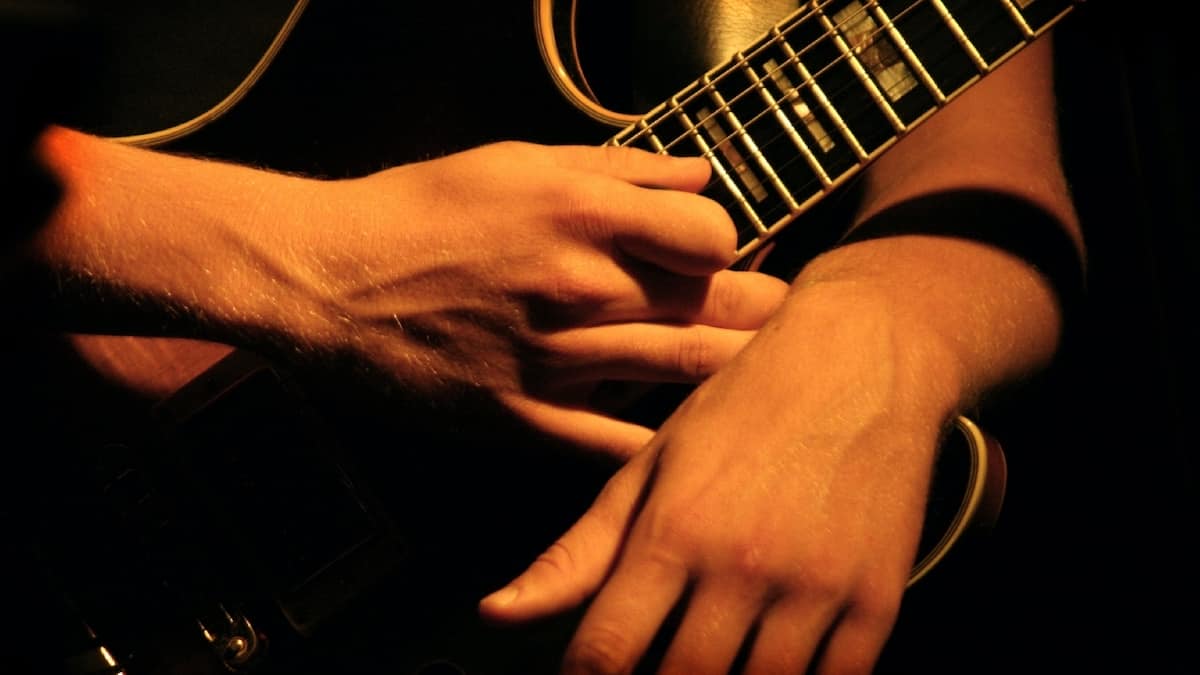Jazz Guitar Lessons
A Look At The Depth And Difficultly Of Jazz Guitar

Jazz guitarist and educator Chuck Anderson provides some insight into learning jazz guitar.
Interest in the study of jazz guitar is at an all-time high. However, the understanding of the depth and difficulty of the jazz guitar seems to be at an all-time low.
Most of the blame can be placed on the internet’s approach to virtually everything. All things, according to the internet philosophy are or should be free, quick, and easy. All three are wrong.
Jazz guitar is a difficult pursuit. If you are self-taught, it’s common to get “stuck” at some point. This is where a highly qualified teacher is not only helpful but is perhaps necessary. One advantage of the internet is that it makes finding a teacher anywhere in the world possible. In-person study still has advantages but virtual learning with a highly qualified teacher beats the alternative of being on your own. Everyone learns in different ways which is why a one size fits all approach to the jazz guitar is ineffective.
More JGT lessons from Chuck Anderson.
If you have a thoroughly developed approach to learning the instrument and the style, there are many areas of development that are essential. Some of these areas are technique, jazz chords and applications, improvisation, chord and melody technique, understanding the relevant theory behind this art form, repertoire, strong ear training, and creativity. These are just the most obvious areas.
Each area has many levels and each area takes time, practice, and patience to learn. This, of course, assumes that you have a way to organize, learn and apply these skills.
For those who seriously pursue this instrument and this style, it is remarkably rewarding!
Check out Chuck’s 7 album sampler
Most players come to the jazz guitar from other styles such as rock, country, folk, pop, blues, etc. It’s possible to begin your guitar study with the jazz style but it’s not typical.
What drives players to jazz from other styles is a much greater reservoir of chords, progressions, scales, etc. If you are proficient in another style, don’t assume that there is a direct carry-over to jazz. Most players are surprised at how much there is to learn in the jazz guitar style.
A plan and patience are critical in order to succeed!
More Lessons from Chuck Anderson –
What You Need To Know About Diminished Scale Fingerings and Chord Application
Helpful Tips With Symmetric Whole Tone Scale Fingering
Learn More About Double Third Chord Voicings for Guitar
Subscribe to Jazz Guitar Today – it’s FREE!
-
Jazz Guitar Lessons2 weeks ago
New JGT Guitar Lesson: Analyzing “Without A Song”
-
Jazz Guitar Lessons4 weeks ago
New JGT Guitar Lesson: Considering “Falling Grace”
-
Artist Features1 week ago
New Kurt Rosenwinkel JGT Video Podcast – July 2024
-
Artist Features3 weeks ago
JGT Talks To Seattle’s Michael Eskenazi



















